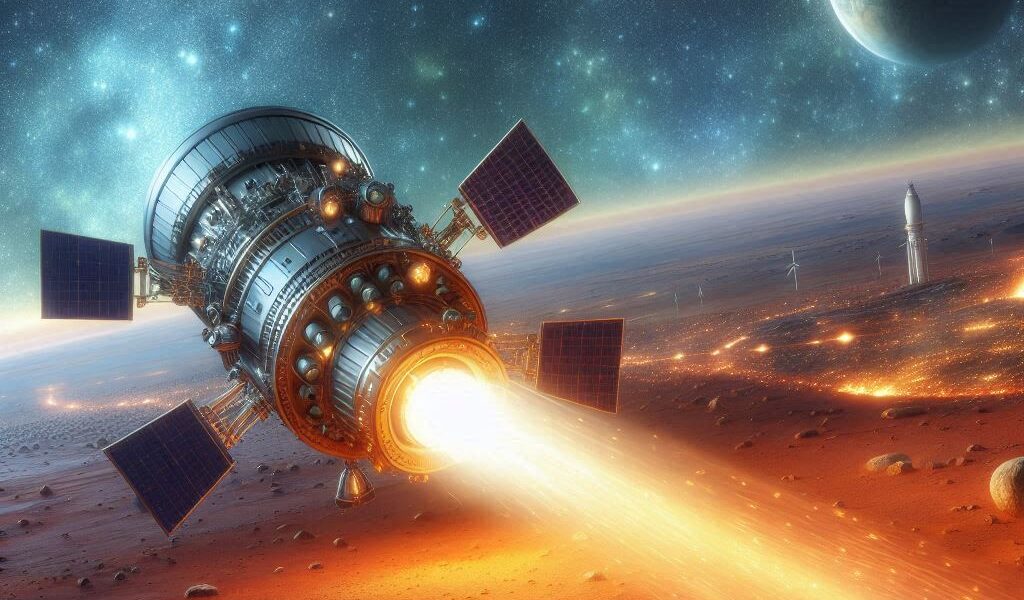Thrust Without the Need for Traditional Fuel That Defies Laws of Physics
Prof. Aécio D’Silva, Ph.D
AquaUniversity
Asymmetrical electric fields and Electrostatics propulsion play a crucial role in propellantless propulsion systems by leveraging electric fields to generate thrust without the need for traditional fuel. Here’s a detailed explanation:
The Principles of Asymmetrical Electric Fields and Electrostatic Propulsions
Asymmetrical electric fields and Electrostatic propellantless propulsions systems use electric fields to create a force that propels a spacecraft. The basic idea is to generate a net force by manipulating charged particles or fields. This can be achieved through various methods, such as using asymmetrical electric fields and electrostatics pressure to produce propellantless thrust.
What Are Asymmetrical Electric Fields?
Asymmetrical electric fields, also known as asymmetric rectified electric fields (AREFs), occur when an electric field is not uniform in all directions. This can happen in various scenarios, such as when different types of ions in a liquid have unequal mobilities, or when an oscillating voltage is applied across an electrolyte with blocking electrodes.
In these fields, the electric force on charged particles can vary depending on their position and the direction of the field. This can lead to interesting effects, such as particles following curved paths or the creation of steady electric fields from oscillating potentials.
What is electrostatic pressure propulsion?
Electrostatic pressure propulsion is an advanced concept in spacecraft propulsion that utilizes electrostatic fields to generate thrust. This method creates a voltage difference across electrically conductive surfaces, resulting in an electric field. The electric field then produces an electrostatic pressure force on the surface. If these forces are asymmetrical, they can generate a net force that propels the spacecraft.
This type of propulsion is still largely experimental but holds promises for efficient, propellant-less space travel. It could potentially enable high-speed travel within our solar system, significantly reducing travel times to destinations like Mars.
Category: Nancy Grace Roman Space Telescope
Why There Are No Green Stars in the Universe: Unveiling the Colors of Celestial Bodies
Exploring the Scientific Explanation Behind the Absence of Green Stars in Space
Prof. Aécio D’Silva, Ph.D
AquaUniversity
Join us in this post in the intriguing world of celestial bodies and discover why green stars are a rarity in the vastness of the universe. The Heavens Declare the Works of God and Nature and the Firmament Announce the Greatness of His Creation
No Green Stars – Gazing up at the night sky, we often marvel at the twinkling stars, each radiating a unique hue. From the fiery reds to the brilliant blues, the colors of stars have fascinated humans for centuries. However, one question persists: why do we never see green stars? In this blog post, we will unravel the scientific explanation behind this intriguing phenomenon and shed light on the true nature of stellar colors.
Read moreNancy Grace Roman Space Telescope: A Game-Changer in Astrophysics
The Nancy Grace Roman Space Telescope, set to launch in 2027, is poised to revolutionize astrophysics with its advanced technology and remarkable capabilities.
By Aécio D’Silva, Ph.D
AquaUniversity
Nancy Grace Roman Space Telescope – From studying exoplanets to observing the early universe, exploring the incredible features and capabilities of NASA’s newest space telescope and how it compares to the James Webb Space Telescope
If you’re like me, a huge astronomy enthusiast who loves looking up at the heavens admiring the works of God’s creator who made the entire universe and everything in it, Nancy Grace Roman Nasa Space’s new Telescope is fantastic news. As we know, since the dawn of civilization, humanity has looked to the stars for answers about the universe and our place in it. NASA has been at the forefront of this quest for knowledge for decades, launching telescopes that have unlocked some of the universe’s most profound mysteries. The Nancy Grace Roman Space Telescope, planned to be released in May 2027, is the latest addition to NASA’s arsenal of space-based observatories and promises to take us even deeper into the cosmos than ever before.





